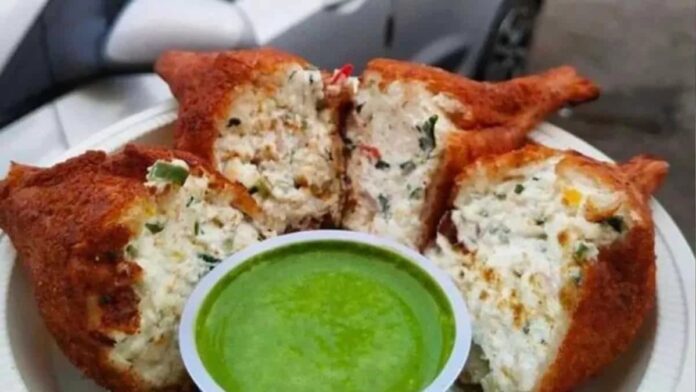Dahi Ke Sholay is one of the best vegetarian snack options for parties and social gatherings. It is extremely crispy and can be enjoyed with a variety of dips.
Although it is a vegetarian snack, it is equally loved by non-vegetarians because of its comforting flavours. The best part about the snack is that it can be made from the most basic ingredients already available in one’s kitchen.
Very often, people try these wonderful appetisers in restaurants and try to make them at home. But somehow the home-made version of Dahi Ke Sholay doesn’t taste as good as the one served at restaurants. Although the recipe for making Dahi Ke Sholay might seem simple, one has to take extreme care of following every step in the recipe properly. This helps ensure the blend of the most perfect texture and flavours in a particular snack.
Here are some tips for making restaurant-style Dahi Ke Sholay at home.
* Making Hung Curd
Hung curd is the main ingredient in the recipe of Dahi Ke Sholay. The preparation of this appetiser must be started a day before it has to be prepared. The texture of the hung curd that is used to make Dahi Ke Sholey should be perfect. It shouldn’t be too watery or too stiff to ensure that the Dahi Ke Sholay turns out to be super soft from the inside. To get the best type of hung curd, some curd must be stuffed inside a muslin cloth. The muslin cloth is important because it has very fine sieves that help in extracting any extra water from the curd. The cloth must be hung at any place in the kitchen for several hours or even overnight. During this process, only the creamy part of the curd will remain in the cloth and anything extra will be removed. In the morning, one will get the needed creamy curd to make Dahi Ke Sholay.
* Covering Dahi Ke Sholay
Since Dahi Ke Sholay is a stuffed snack, it is extremely important to use a strong binding agent that holds the snack properly. This helps in ensuring that no particles from the inside of the snack fall out during the process of deep frying. Not putting on a proper external coat will make everything very messy. The best way to bind Dahi Ke Sholay properly is by using some cornstarch or a bit of chickpea flour in the yoghurt mixture. The chickpea flour or cornstarch will keep all the ingredients used in the mixture together and in a proper shape for a long time.
* Level Of Spices
The level of spices used in making Dahi Ke Sholay is subliminal. This snack has a very balanced flavour of different spices and herbs and all of these spices are equally important. The optimum level of spices is responsible for giving Dahi Ke Sholay its irresistible flavours. One should use a variety of spices, like garam masala, cumin powder, red chilli powder, chaat, masala, black pepper, and different types of herbs to give it a nice and balanced taste. All of the spices should be used in a very balanced way. But if one likes to add a particular spice more than the others, then it can be adjusted as per preference.
* External Coating
As important as it is to use a binding ingredient to hold the internal ingredients together, it is equally important to use an external coating to keep everything in place. This is the major difference between the Dahi Ke Sholay prepared at restaurants and the ones that are made at home. To provide a thick and even coat to Dahi Ke Sholay one can go for some bread crumbs or suji that are coated uniformly over the Dahi Ke Sholay. This will keep the snack intact during the process of frying and nothing will get dishaped. Also, the external coat on Dahi Ke Sholay adds an extra crunchiness to the snack, which makes it even more delectable.
* Temperature For Frying
While frying Dahi Ke Sholay, keeping a watch on the temperature of the oil makes a huge difference. This is probably the most important step in the preparation of the snack and decides its texture and taste. The oil must be extremely hot as it helps in cooking the snack instantly and also doesn’t let it absorb excess oil. Also, the oil must not be so hot that it just cooks the outside of the snack and leaves the internal mixture uncooked. As soon as the Dahi Ke Sholay becomes brown from the outside, it must be taken out from the oil.


